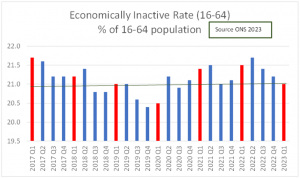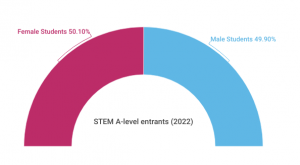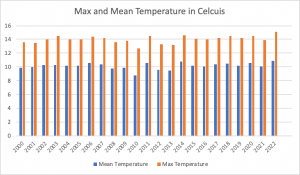Women in STEM: Is the gender gap showing signs of closing?
STEM subject entries by girls in A-Levels overtook boys for the first time last year, a sign that the notorious gender gap in the sectors of science, technology, engineering, and maths may be closing. Figures from CaSE (Campaign for Science and Engineering) showed that 50.1% of entrants in STEM subjects were girls, with boys just behind at 49.9%. However, despite this increase, experts are concerned the gap in particular subjects such as computing and engineering is still prominent.

Source: CaSE Analysis
Figures from a GOV.UK analysis show that whilst female students taking up STEM A-levels has increased by 6.4%. However in core STEM subjects such as physics, computer science and maths, male students hugely out number female entrants. Girls taking up computer science, for example, only increased from 14.7% to 14.9% between 2020 and 2021.
Figure 1: Breakdown of STEM A-Level Entrants (2020-21)
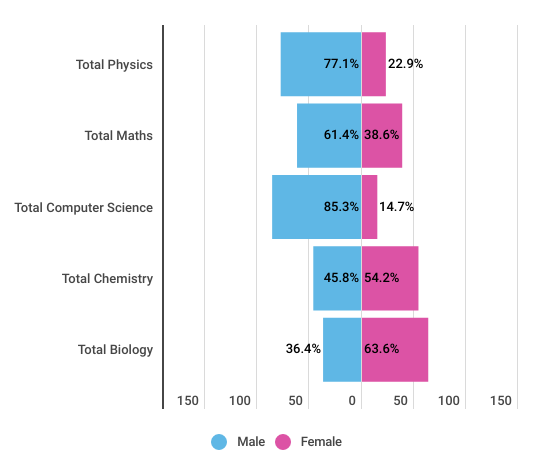
Source: Gov.uk
Recent UCAS data from HESA also shows that women only make up 35% of STEM students in higher education institutions across the UK. Amongst this, computing and engineering have the least amount of gender diversity, suggesting that young women’s interest in the subject increases by not even 10%.
Between 2019 and 2021, female university students accounted for only 21% of computing enrolments, 20% in engineering, and 37% in mathematical sciences.
Figure 2: UK STEM Enrolments (2020-21)
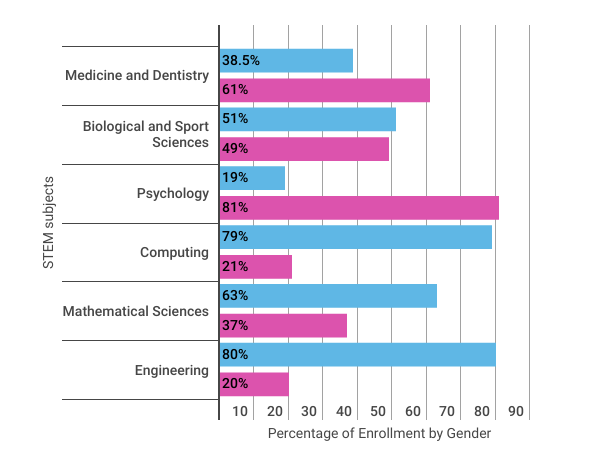
Source: HESA
Campaigns that advocate for closing the gender gap, state that in these subjects, the gender gap is actually getting worse.
GirlsWhoCode, an international non-profit whose main mission is closing the gender gap in computing by 2030. They note that since 1995, there has been a 15% decrease in the number of female computer scientists worldwide. They state that the biggest drop off point of girls in computer science is between 13 and 17, and work to encourage female interest by partnering with school districts and library networks.
Female students report feeling intimidated by the gender disparity in their classes, leading them to feel outnumbered and lacking role models.
Lucy Brownless, a Computer Science student at the University of Kent, said that when first starting the course, it was hard not to notice the gender imbalance.
“It felt and has felt very much aimed towards men, which initially was very intimidating and would have put me off had I not felt confident in my abilities”.
“Computer science is an important skill to have in our current society and I do think it should be far more balanced than it is and more should be done to stop girls getting deterred from entering into the field”.
Engineering is the other main subject that faces huge gender disparity, with only a fifth of those enrolled between 2019 and 2021 being female, a disparity that continues into the workforce.
According to a report by EngineeringUK in 2022, women make up only 16.5% of those working in engineering roles, a 6% increase from 2010.
Their findings revealed that whilst the number of women in engineering roles had increased, women were more likely to be in related engineering roles rather than ‘core’ roles such as those concerned with mechanics and electronics.
Dr Hilary Leevers, Chief Executive of EngineeringUK, said of the report, “It’s great to see an increase of women working in engineering roles, particularly for International Women’s Day, with almost 370,000 more women in those roles in 2021 compared with in 2010.
“We need to ensure that engineering is a career choice that attracts the next generation of young women and that we respond to the needs of women who have left the engineering workforce and actively bring them back.”
Figure 4: Core STEM Workforce in the UK 2016-2022
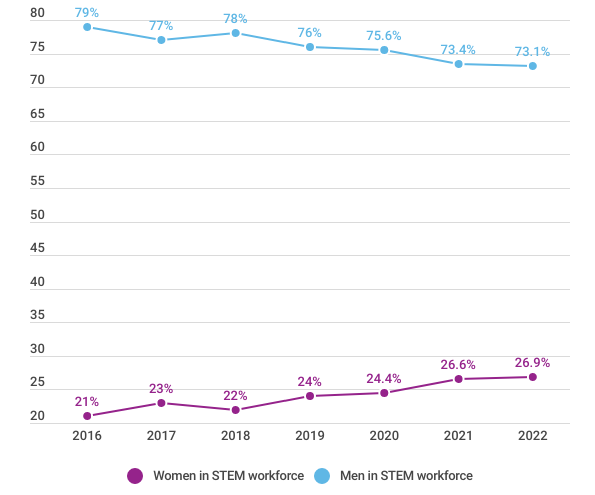
Sources: Women in STEM and WISE Campaign
With the amount of students enrolling into STEM subjects in both A-levels and university undergraduate courses set to rise in 2023, more young women than ever are pursuing careers in the sector. Though still gaping at 28% overall worldwide, with a 46% gap in the UK, increases in their enrolment could mean disparities in male-dominated subjects like computing and engineering will be far more balanced by 2030.


